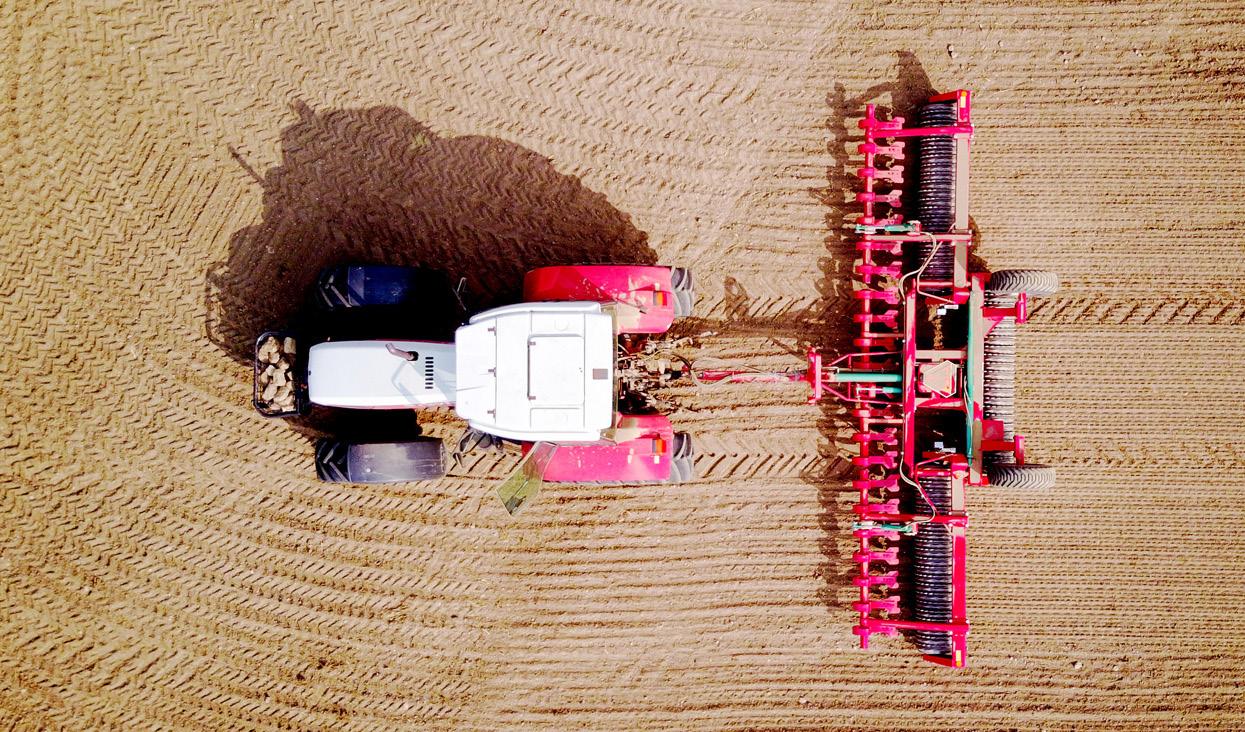
5 minute read
Measuring and modelling climate risk
from A NIBA Brokers' Guide: A sustainable future climate hazard prevention and mitigation strategies
by niba_au
There are worrying signs that climate change could exacerbate already increasing trends in property losses. As industries access tools and data to quantify the potential impact, how can brokers use data and insights to inform their insurance advice to clients?
Climate change is already increasing a range of “chronic climate hazards”, such as annual average temperature, temperature extremes, and average sea level according to a report by the Climate Measurement Standards Initiative (CMSI),^^ an industry-led collaboration between Australian insurers, banks, scientists, reporting standards professionals, service providers, and supporting parties. Even before this summer began, parts of Australia saw record heat for October, and the storm season kicked off with a vengeance. At the same time, Bureau of Meteorology figures show multi-year rainfall deficiencies are still having an impact across significant areas of the country.
Advertisement
And the projected changes in some of the ‘acute climate hazards’ – such as tropical cyclones, floods, and extreme fire weather days – could put even more upward pressure on insured property losses.
Ryan Crompton, Managing Director of catastrophe loss modelling specialists Risk Frontiers and a member of the CMSI Scientific Committee, says it’s hard to quantify the impact of climate change on a range of acute climate hazards with no clear signals as yet on risks, such as flood and hail. “That doesn’t necessarily mean there has been no impact, but the information is not yet available to detect and attribute the change,” he says.
With insured losses being a key metric across the insurance industry, Crompton says identifying trends that can be attributed to climate change is challenging, because the exposure and vulnerability to hazards are non-uniform, adding to the volatility. “When we’ve analysed the Insurance Council of Australia’s natural disaster loss list, we’ve observed the very large effect changing societal factors has on the time series of losses. This includes increases not only in inflation, but also large increases in populations and wealth, particularly in areas such as south east Queensland.”
Crompton points out that if these high growth areas are also adversely affected by climate change in the future, then this will further concentrate risk. “We have tools, such as catastrophe loss models, that can be used to analyse possible climate change effects on future disaster losses. We can use these to assess changes in the hazard, future exposure levels, and adaptation measures, either individually or the combined effects of these.”
Crompton says brokers need to have the data insights and capabilities to help their clients now and into the future, including using such tools as catastrophe loss models or the output of these tools. “Risk is now often assessed at the location level and capabilities also exist to assess future loss levels. These are important factors when considering premiums today and what may be offered in the future.”
Tesh Patel, Allianz Australia Insurance Limited (Allianz) General Manager, Commercial Products and Portfolio agrees. “We need to help insureds make more informed choices and the industry has accountability and responsibility to help customers be as safe as they can.
“We observe proactive brokers discussing mitigation strategies with clients to the best and most affordable degree. Ultimately, insurance is there to protect the client in the event of a loss, but this is such an evolving period, brokers really should be doing what they can to help clients avoid losses in the first place.”
“Capacity is reducing in some geographies, particularly those prone to floods or other types of weather events, and relationships are key. Continuity helps insurers understand the needs of the insureds so I would say this isn’t a great time for businesses to look to move their cover to achieve relatively small premium savings.
“And brokers who are able to guide clients on risk mitigation are able to influence the pricing available which is always dependent on the way individual risks are presented. The more the risk is mitigated, whatever the peril, will be a major influence.”
THINGS TO CONSIDER
1. Take advantage of modelling tools to quantify the risk for your clients. 2. Catastrophe loss models can help you assess changes in your clients’ hazard risk, future exposure levels, and the impact of adaptation measures. 3. Climate change is a significant factor, but societal shifts are also putting pressure on insurance costs and premiums. Risk is now often assessed at the location level, and areas of significant growth in both population and wealth, such as south-east Queensland, could be particularly vulnerable. 4. Brokers who can guide clients on risk mitigation can influence the pricing available, which is always dependent on the way individual risks are presented.
USING ‘CAT LOSS’ MODELS
Risk Frontiers’ Crompton says it’s important to remember that a low hazard risk does not necessarily mean low loss risk, as the financial impact is also a function of the exposure and vulnerability.
He believes all industries can follow the lead of insurance to make more use of catastrophe loss or ‘Cat Loss’ models, and other databases to analyse possible climate change impacts, explore what future scenarios look like, and how that translates into dollar losses.
Cat Loss models have three major modules – hazard, exposure, and vulnerability. “The hazard module can generate many possibilities of what hazard activity might be next year or at a future point in time under a given emissions scenario,” Crompton says. “The exposure module includes details about the assets, such as insured value, age, and other attributes, and the vulnerability module relates the hazard to the damage ratio for a given asset type. For tropical cyclones, the vulnerability module relates wind speed to damage to determine loss.
“The insurance industry has had these tools and analytical capabilities for several decades. They’re very sophisticated. What has changed with the increased focus on climate risk is that there are opportunities to apply these to other sectors, as well as to assess current and future risk. We’re also increasingly working with sectors, like banking and infrastructure on this.”
Allianz’ Patel says tools are being more widely taken up. “The reinsurance industry is looking at this as well. Models will really determine the industry’s response to changing weather patterns and the future pricing of insurance.”




